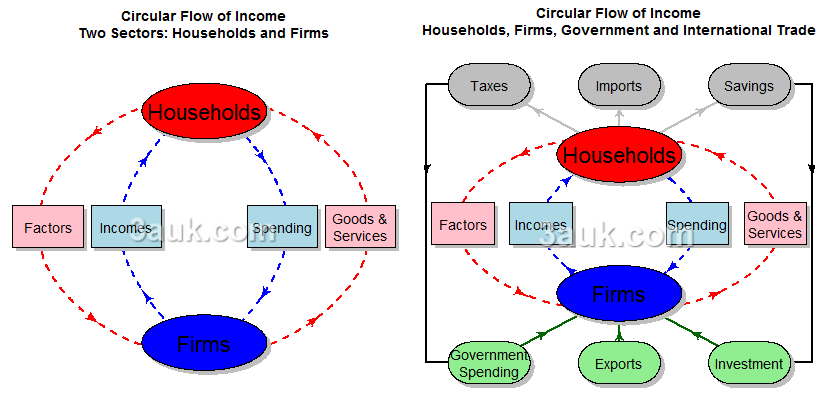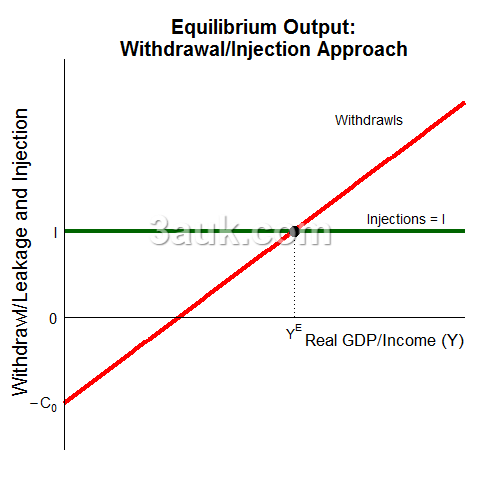Meta Description
In this blog post, we will discuss the circular flow model in economics, its importance, and how it applies to both closed and open economies. We will also explore injections and leakages and the concept of equilibrium and disequilibrium in the circular flow model.
Keywords: circular flow model, income, injections, leakages, equilibrium, disequilibrium, closed economy, open economy, households, firms, government, international economy.
The circular flow model is an essential concept in macroeconomics. It illustrates how money flows through the economy, providing a basic understanding of how the economy works. In this blog post, we will discuss the circular flow model and its importance in economics.
What is the Circular Flow Model?

The circular flow model is a simplified representation of the economy, illustrating how money flows between households, firms, and government. In this model,
- households supply labor to firms in exchange for income, which is then used to purchase goods and services from the firms.
- The firms, in turn, use this income to pay for the factors of production, such as labor, capital, and resources, and to produce goods and services that are sold to the households.
- The government also plays a role in the circular flow model, collecting taxes and providing goods and services to the households and firms.
Importance of the Circular Flow Model
The circular flow model is important because it shows how the economy functions as a whole. It demonstrates how money flows through the economy, connecting households, firms, and government. It also shows how the economy can experience equilibrium and disequilibrium, which can have significant implications for economic growth and stability.
Circular Flow of Income in a Closed Economy

In a closed economy, there are no interactions with the international economy. The circular flow of income involves the flow of money between households, firms, and the government. Injections into the circular flow of income include government spending and investment, while leakages include savings and taxes. The level of income in the economy is determined by the level of injections and leakages. If injections exceed leakages, the economy is in a state of surplus, while if leakages exceed injections, the economy is in a state of deficit.
Circular Flow of Income in an Open Economy
In an open economy, the circular flow of income involves the flow of money between households, firms, the government, and the international economy. Injections into the circular flow of income include exports and foreign investment, while leakages include imports and foreign aid. The level of income in the economy is determined by the level of injections and leakages from both domestic and international sources.
Equilibrium and Disequilibrium

In the circular flow model, equilibrium occurs when the level of injections equals the level of leakages. This means that the economy is in a state of balance, with no surpluses or deficits. Disequilibrium occurs when the level of injections does not equal the level of leakages, leading to a surplus or deficit in the economy. This can have significant implications for economic growth and stability.
Summary
To summarize, the circular flow model is an essential concept in economics, providing a basic understanding of how money flows through the economy. It illustrates the connections between households, firms, and government, and how they interact to create economic growth and stability. By understanding the circular flow model, we can better understand the workings of the economy and make informed decisions to promote economic growth and stability.
Read more on related topics of the model of Circular Flow of Income here.
